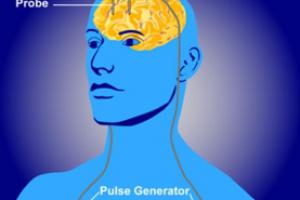What Little Babies See That You No Longer Can
Scientific American
 It wasn’t until almost a century after Boole’s pioneering work that the world caught up. Both Victor Shestakov at Moscow State University in 1935 and Claude Shannon at MIT in 1937 proposed using Boolean logic to design electrical switches, the latter’s work paving the way for a major shift in electrical engineering in the USA. By late 1948, Shannon had introduced what we now know as information theory, and digital computers soon followed.
It wasn’t until almost a century after Boole’s pioneering work that the world caught up. Both Victor Shestakov at Moscow State University in 1935 and Claude Shannon at MIT in 1937 proposed using Boolean logic to design electrical switches, the latter’s work paving the way for a major shift in electrical engineering in the USA. By late 1948, Shannon had introduced what we now know as information theory, and digital computers soon followed.
 Estimating civilian casualties of U.S. military operations is extremely difficult . . . “There was essentially no record kept in Afghanistan and Pakistan for a few years of any U.S.-caused civilian casualties, and most especially the killing of children" . . . “the harm to children in war is also indirect--morbidity and mortality due to the destruction of infrastructure which impairs delivery of medical care, makes drinking water unsafe, and makes food scarce.”
Estimating civilian casualties of U.S. military operations is extremely difficult . . . “There was essentially no record kept in Afghanistan and Pakistan for a few years of any U.S.-caused civilian casualties, and most especially the killing of children" . . . “the harm to children in war is also indirect--morbidity and mortality due to the destruction of infrastructure which impairs delivery of medical care, makes drinking water unsafe, and makes food scarce.”
 Given that gender portrayals in music videos, advertisements, video games and other popular culture powerfully shape expectations and attitudes about gender roles, it is not surprising that the emergence of powerful, but still hypersexualized, heroine images has affected popular beliefs and self-images. But the impact has not always been what you might think.
Given that gender portrayals in music videos, advertisements, video games and other popular culture powerfully shape expectations and attitudes about gender roles, it is not surprising that the emergence of powerful, but still hypersexualized, heroine images has affected popular beliefs and self-images. But the impact has not always been what you might think.
 A highly invasive procedure, which involves drilling holes in the skull and inserting electrodes deep inside the brain allowing a pacemaker-style device to deliver pulses of electricity to specific neural regions has failed to show any effectiveness in treating depression despite claims by the media and some prominent scientists.
A highly invasive procedure, which involves drilling holes in the skull and inserting electrodes deep inside the brain allowing a pacemaker-style device to deliver pulses of electricity to specific neural regions has failed to show any effectiveness in treating depression despite claims by the media and some prominent scientists.
Spread the word